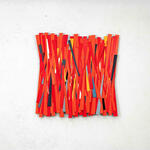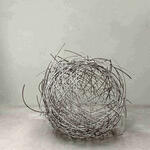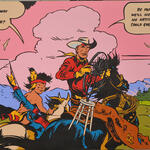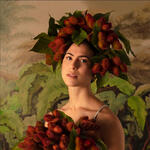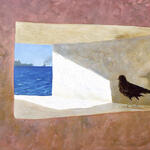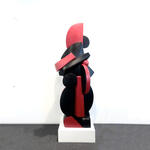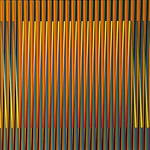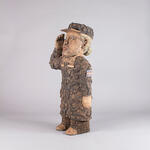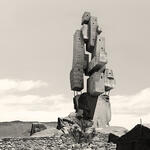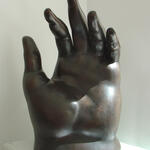Fernando Botero
Bio
Fernando Botero (Medellín, 1932 – Monaco, 2023) was one of the most internationally renowned Colombian artists, celebrated for developing a distinctive style characterized by exalted volumes and monumental proportions. Largely self-taught and later trained at the San Fernando Academy in Madrid, Botero drew inspiration from the European pictorial tradition — from masters such as Velázquez, Goya, and Piero della Francesca — as well as from Latin American popular art. His work spans painting, drawing, and sculpture, and through his unique treatment of form, he explored themes ranging from everyday life and art history to social and political critique. The volume in his work is not mere excess, but a language of its own that amplifies the sensuality, irony, and dignity of his characters.
Throughout his career, Botero exhibited in museums and public spaces around the world, establishing himself as a symbol of modern Latin American art. His monumental sculptures have been installed in cities such as Paris, New York, Madrid, and Medellín, while his paintings are part of the collections of museums including MoMA, the National Museum of Colombia, and the Botero Museum in Bogotá, which houses an important donation from the artist. Botero also addressed dark episodes of recent history, as seen in his series on violence in Colombia and the Abu Ghraib tortures, demonstrating his ethical commitment and his ability to transform beauty into a vehicle for reflection. With his unmistakable style, Fernando Botero left a legacy that transcends generations, affirming Latin American cultural identity through a universal lens.
Statement
Fernando Botero was a Colombian painter, draftsman and sculptor, born in Medellin in 1932. In 1944, at the age of 12, Botero began drawing scenes of the “fiesta brava” as an illustrator, to later make his first watercolors, a difficult but very recognized technique in the Antioquian context. Four years later, by commission, for the cornice of the bar of a residence, he makes his first work with oil on wood painting In vino veritas, where an interest in the volume of its forms is already appreciated. It is surprising that a self-taught artist recreated this theme with figures and objects of Antioquian culture with a certain voluptuousness.
In the fifties and sixties Botero’s style was becoming more defined, but the brushstroke in his painting and the line in his drawings is still loose, and one can perceive the influence of abstract expressionism, so in vogue at that time, and completely antagonistic to Botero’s figuration. Between 1966 and 1968 Botero finished defining his style, which he reached by adjusting the brushstroke, developing the volume of the forms and altering the proportions. This is the style for which he is now recognized worldwide, representing scenes of everyday life characteristic of popular life in Colombia in his youth and consolidating a universal iconography. It is in these years, after a period of searching, that the artist himself acknowledges having found his style, developed since then with absolute conviction.
In 1973 Botero settled in Paris, after more than a decade of stay and creation in New York, and ventured into sculpture, a technique that he mastered with great mastery and with exhibitions of monumental works in the main thoroughfares of many cities around the world.
His vast work, now fully consolidated, his deliberate aversion to contemporary art and his extensive knowledge of the history of classical painting make Botero an exceptional artist in the country and the rest of Latin America. His paintings and drawings are highly personal works that in no way can be confused with the various international figurative positions of recent years. He depends more on the art of the great masters, on popular art, on the pre-Hispanic tradition, on the imagery of Latin America’s colonial period, than on any figurative “ism”.
Botero is the most recognized plastic artist in Colombia in the last decades. His works are part of the collections of the MoMA in New York, the Smithsonian Institution in Washington D.C., the Reina Sofia Museum in Madrid and the Museum of Latin American Art in Buenos Aires, among others. His sculptures decorate public and private spaces around the world, from Madrid’s airport to a skyscraper complex in downtown Singapore. Today, the largest group of works by this painter can be found at the Botero Museum in Bogota. This venue, which opened in 2000, exhibits 123 pieces created by the artist and 85 works of international art from his personal collection.



